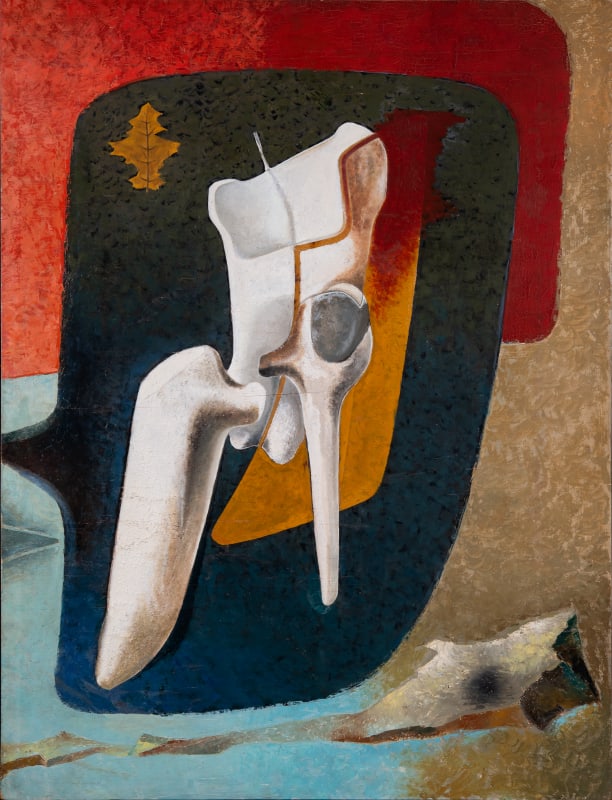Enrico Prampolini: Opere dal 1926 al 1941
ML Fine Art is pleased to present the exhibition Enrico Prampolini. Opere dal 1926 al 1941, accompanied by an introductory essay by Francesco Guzzetti, professor of Contemporary Art History at the University of Florence. The exhibition is aimed at shedding light on the central role of the artist as a driving force behind modern art research and a truly international opening of Italian art in the first half of the 20th century.
Enrico Prampolini (Modena, 1894 - Rome, 1956) is not only one of the most important exponents of Italian Futurism. Painter, sculptor, set and costume designer, the artist was active in all fields, combining his pictorial activity with a theoretical focus that led him to dialogue with some of the most important figures of the European avant-garde.
Prampolini became part of the Futurist movement at the age of only 18, when he enthusiastically joined Filippo Tommaso Marinetti's movement and began attending Giacomo Balla's atelier. Together with Balla and his friend Fortunato Depero, he was a protagonist of the turning point of Roman Futurism in the direction of greater analog abstraction and began to incorporate Futurist principles into scenography, to which he devoted himself with great enthusiasm in the late 1910s and early 1920s. It was precisely through his involvement as a set designer and costume designer that Prampolini was able to articulate his own visual language, as evidenced by works such as the study for the scene of L'heure du fantoche, the work on display in the exhibition.
In the 1920s he began a reconsideration of his own painting, conceived for wide, flat backgrounds, with a accentuated geometrizing intention and sharp, angular contoured forms, as well evidenced by the work Grotta Verde. Architettura dello spazio of 1928.
During these years Prampolini became an authentic ambassador of the new Italian art in Europe. He lived in Paris, where he moved in 1925 and where he established increasingly fruitful relations with the European avant-garde and their leading exponents-Walter Gropius, Tristan Tzara, Pieter Mondrian, Paul Klee, Fernand Léger, and Robert Delauunay.
In the 1930s Prampolini entered the middle of the elaboration of his artistic language with "cosmic idealism," an interpretation in a spiritual, cosmic key, of Futurist Aeropittura. Entità Cosmica or Organismi cosmici are some of the titles through which the artist defines his vision: pure geometric forms and organic agglomerates confront each other on the painting surface, often framed or connected by strongly dynamic and abstract lines. The concept of spirit, intended as the driving force of dynamism, and that of a cosmos, as a synthesis of material reality, become the subjects of his works. It is material reality, finally, that is one of the central points of the artist's aesthetic. In fact, Prampolini from the very beginning of his artistic career showed a strong preference for the use of the most disparate materials, thus creating the theoretical and practical foundations of polymateric art and becoming an inescapable example for subsequent informal poetics.
The fourteen works on display in the exhibition, created between 1926 and 1941 ,are intended to retrace these key moments in Prampolini's artistic oeuvre, offering a rare opportunity for a deeper understanding of the Modenese artist's work.
-
 Enrico Prampolini, Apparizioni Biologiche, 1935
Enrico Prampolini, Apparizioni Biologiche, 1935 -
 Enrico Prampolini, Aeropittura - Composizione, 1934
Enrico Prampolini, Aeropittura - Composizione, 1934 -
 Enrico Prampolini, Analogie plastiche , 1930
Enrico Prampolini, Analogie plastiche , 1930 -
 Enrico Prampolini, Angeli della terra ( I miti dell'Azione), 1936
Enrico Prampolini, Angeli della terra ( I miti dell'Azione), 1936
-
 Enrico Prampolini, Apparizione biologica , 1940
Enrico Prampolini, Apparizione biologica , 1940 -
 Enrico Prampolini, Apparizione Biologica B (OriginI), 1941
Enrico Prampolini, Apparizione Biologica B (OriginI), 1941 -
 Enrico Prampolini, Autoritratto cosmico , 1934 ca.
Enrico Prampolini, Autoritratto cosmico , 1934 ca. -
 Enrico Prampolini, Composizione (Polimetria), 1930
Enrico Prampolini, Composizione (Polimetria), 1930






























